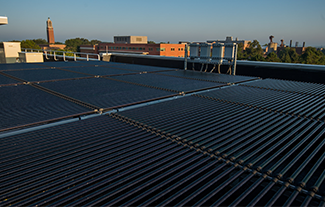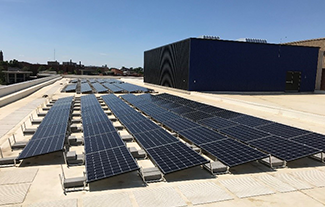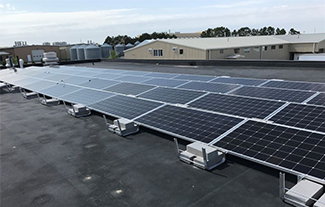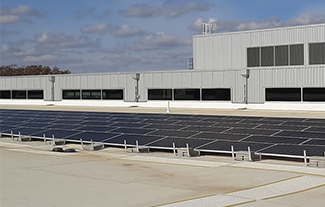SDSU has made strides to control energy consumption through energy conservation projects and energy management strategies. The following is a sample of practices and methods that the university strives for in as many projects as possible:
- Energy Efficient Lighting – Approximately 95% of the fluorescent fixtures on campus have been upgraded to more efficient bulbs and ballasts. Over 75% of compatible light fixtures have been converted to LEDs, which consume significantly less energy and last longer than traditional light bulbs.
- Occupancy Sensors – Occupancy sensors continue to be installed across campus to assist with conserving energy when a room is unoccupied by turning off room lights. SDSU now has over 1,000 occupancy sensors on campus. Depending on the size of the room, these sensors will pay for themselves in 10 years or less.
- Energy Star Products – SDSU abides by the Office of Procurement Management’s Policy ES-10 which states that all state agencies are required to purchase ENERGY STAR designated products if a product exists. This policy went into effect in 2008.
- Insulation – Pipes and new roofs are properly insulated to minimize heat loss. By reducing the amount heat lost, SDSU has decreased its energy usage.
- Updating HVAC Controls – SDSU maintains updated controls to allow for more accurate measurement and temperature regulation for each building. These controls reduce room overheating and have been shown to reduce energy costs by one-third.
- Steam Efficiency – SDSU has annual inspections of its steam system. Every year SDSU replaces numerous steam traps and repairs steam leaks to minimize costly steam loss. A typical failed steam trap or leak left alone can cost $500 annually in energy loss. These repairs pay for themselves within months.
- Central Heating and Chiller Plants – SDSU operates a central heating and chiller plant. In general, central plant equipment is more efficient and consumes less energy. Another cost savings comes from the fact that there are fewer pieces of equipment to maintain, allowing for maintenance efforts to be more focused on less equipment.
- Heat Recovery and Free Cooling – Heat recovery is a system which captures the heat that would have normally been lost and recovers a portion of it to pre-heat the incoming heat to the building. Heat recovery systems save tremendous amounts of energy on our cold South Dakota winter days and are installed in many labs. Free cooling takes advantage of nearby areas that have lower air temperatures. The cooling system’s temperature is lowered when in this area, minimizing the energy that is needed to cool the warmer area.
- High Efficiency Windows – Across campus single pane windows are being replaced with more efficient double pane glass, which are better at reducing energy lost through windows.
- Solar arrays – Five solar arrays have been installed across campus accumulating to a total of 165.85 KW. The energy produced by these arrays is equivalent to the amount of energy needed to power 25 homes.
Solar Arrays

Installed: 2011
23 kW

Installed: July 20, 2018
52.2 kW
Installed: March 2020
7.4 kW

Installed: June 2020
20.25 kW

Installed: April 2021
63 kW

